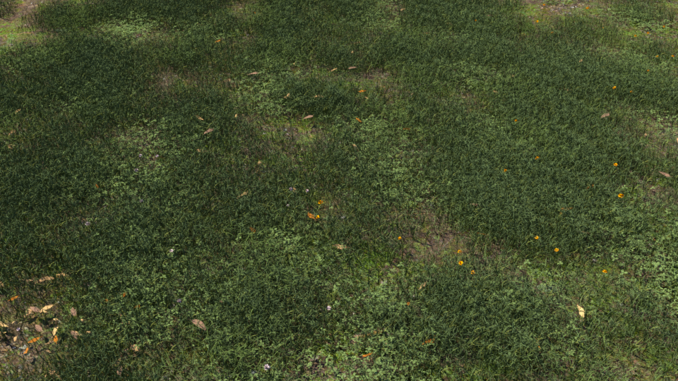Just a small update showing with 3 more particle assets: dead leaves, white flowers, and yellow flowers. (I measured some yellow and white flowers I had in my back yard but I need to get the botanical name to properly classify it  )
)

Mmm, uploading to the forum caused Discourse to resize the image and make it a bit blurry, oh well.